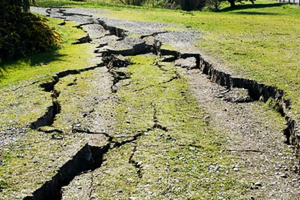Ru
|
Eng
Belarus, Russia, Peru to design nano satellite to predict earthquakes
26.08.2014

Scientists from Belarus, Russia, and Peru will create a nano satellite that will carry out several experiments once it is in orbit, including experiments to assess the possibility of predicting earthquakes. The information was released by Head of the Center for Space Research Studies of the Kursk-based Southwest State University Valerian Pikkiyev, BelTA has learned.
In his words, the new nano satellite will be created as continuation of the work on the Russian-Peruvian satellite Chasqui 1, which was launched into space on 18 August and is now in its orbit. A similar satellite will be the main module, to which two more modules of the same size (10x10cm) — the Peruvian one and the Belarusian one — will be attached. Each of the three modules will carry out its own experiments.
Negotiations are underway with Peruvian scientists, who intend to come up with a way to predict earthquakes using the radio waves that originate from the Earth’s crust and can be detected by a long-wave receiver in the outer space. “The Peruvians also suggest studying the low-frequency spectrum of radio waves in view of the earthquakes that happen very frequently in South America,” noted Valerian Pikkiyev.
In turn, scientists of the Southwest State University will carry out an experiment to study charged particles. The experiment will help understand correlations between phenomena on the Earth’s surface and those in the outer space. The Belarusian State University is also preparing its own research project. The Belarusian university has arranged a contest of student projects and proposals regarding experiments are available, said Valerian Pikkiyev.
The news agency ITAR-TASS earlier quoted Prorector of the Southwest State University Oleg Atakishchev as saying that it would take about two years to create the new nano satellite. A state-of-the-art system will be developed to launch the satellite from the board of the International Space Station. The satellite Chasqui 1 was launched manually by the cosmonaut Oleg Artemyev.
Kazakhstan may become the next partner in outer space studies of the Kursk-based university.
In his words, the new nano satellite will be created as continuation of the work on the Russian-Peruvian satellite Chasqui 1, which was launched into space on 18 August and is now in its orbit. A similar satellite will be the main module, to which two more modules of the same size (10x10cm) — the Peruvian one and the Belarusian one — will be attached. Each of the three modules will carry out its own experiments.
Negotiations are underway with Peruvian scientists, who intend to come up with a way to predict earthquakes using the radio waves that originate from the Earth’s crust and can be detected by a long-wave receiver in the outer space. “The Peruvians also suggest studying the low-frequency spectrum of radio waves in view of the earthquakes that happen very frequently in South America,” noted Valerian Pikkiyev.
In turn, scientists of the Southwest State University will carry out an experiment to study charged particles. The experiment will help understand correlations between phenomena on the Earth’s surface and those in the outer space. The Belarusian State University is also preparing its own research project. The Belarusian university has arranged a contest of student projects and proposals regarding experiments are available, said Valerian Pikkiyev.
The news agency ITAR-TASS earlier quoted Prorector of the Southwest State University Oleg Atakishchev as saying that it would take about two years to create the new nano satellite. A state-of-the-art system will be developed to launch the satellite from the board of the International Space Station. The satellite Chasqui 1 was launched manually by the cosmonaut Oleg Artemyev.
Kazakhstan may become the next partner in outer space studies of the Kursk-based university.
SCIENCE. TECHNOLOGY. INNOVATIONS
13.08.2024
28.06.2024
28.06.2024
25.06.2024
05.06.2024
15.05.2024
15.05.2024
26.04.2024
26.04.2024
26.04.2024













